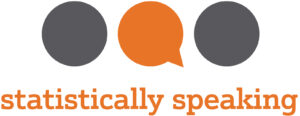
You’ll be excited to hear we’re doing another Statistics Skills Accelerator for our Statistically Speaking members: Count Models.
Stats Skills Accelerators are structured events focused on an important topic. They feature Stat’s Amore Trainings in a suggested order, as well as  live Q&As specific to the Accelerator.
live Q&As specific to the Accelerator.
In August, our mentors will be running a new Accelerator. The first Q&A is August 6, 2025 at 3 pm ET, hosted by Jeff Meyer.
Count models are used when the outcome variable in a model or group comparison is a discrete count:
- Number of eggs in a clutch
- Number of days in intensive care
- Number of aggressive incidents in detention
Count models come in a few types, and any of these can also be used for rates:
- Poisson Regression is the simplest and is the basis for all the other models, but its assumptions are rarely met with real data.
- Negative Binomial regression adds an extra parameter to a Poisson regression measure the extra variance that often occurs in real data.
- Truncated count models work when the lowest values (often just zero) cannot occur. This happens when a count has to occur in order to be part of the population of interest.
- Zero inflated count models are used when there are more zeros than expected. For this model, some zeros could have been something else and others couldn’t.
- Hurdle models also work when there are more zeros than expected, but the process of having a zero is different. In these models, there is an actual “hurdle” one has to pass in order to have a non-zero count.
- Logistic regression, when your count is out of of maximum number.
In this accelerator, learn about the different types of count models, how to understand their results, how to apply them to rates, and how to choose among them.
Note: This training is an exclusive benefit to members of the Statistically Speaking Membership Program and is a combination of watching recorded trainings and live events.
(more…)

What are goodness of fit statistics? Is the definition the same for all types of statistical model? Do we run the same tests for all types of statistic model?
(more…)
One of the main assumptions of linear models such as linear regression and analysis of variance is that the residual errors follow a normal distribution. To meet this assumption when a continuous response variable is skewed, a transformation of the response variable can produce errors that are approximately normal. Often, however, the response variable of interest is categorical or discrete, not continuous. In this case, a simple transformation cannot produce normally distributed errors.
A common example is when the response variable is the counted number of occurrences of an event. The distribution of counts is discrete, not continuous, and is limited to non-negative values. There are two problems with applying an ordinary linear regression model to these data. First, many distributions of count data are positively skewed with many observations in the data set having a value of 0. The high number of 0’s in the data set prevents the transformation of a skewed distribution into a normal one. Second, it is quite likely that the regression model will produce negative predicted values, which are theoretically impossible.
An example of a regression model with a count response variable is the prediction of the number of times a person perpetrated domestic violence against his or her partner in the last year based on whether he or she had witnessed domestic violence as a child and who the perpetrator of that violence was. Because many individuals in the sample had not perpetrated violence at all, many observations had a value of 0, and any attempts to transform the data to a normal distribution failed.
An alternative is to use a Poisson regression model or one of its variants. These models have a number of advantages over an ordinary linear regression model, including a skew, discrete distribution, and the restriction of predicted values to non-negative numbers. A Poisson model is similar to an ordinary linear regression, with two exceptions. First, it assumes that the errors follow a Poisson, not a normal, distribution. Second, rather than modeling Y as a linear function of the regression coefficients, it models the natural log of the response variable, ln(Y), as a linear function of the coefficients.
The Poisson model assumes that the mean and variance of the errors are equal. But usually in practice the variance of the errors is larger than the mean (although it can also be smaller). When the variance is larger than the mean, there are two extensions of the Poisson model that work well. In the over-dispersed Poisson model, an extra parameter is included which estimates how much larger the variance is than the mean. This parameter estimate is then used to correct for the effects of the larger variance on the p-values. An alternative is a negative binomial model. The negative binomial distribution is a form of the Poisson distribution in which the distribution’s parameter is itself considered a random variable. The variation of this parameter can account for a variance of the data that is higher than the mean.
A negative binomial model proved to fit well for the domestic violence data described above. Because the majority of individuals in the data set perpetrated 0 times, but a few individuals perpetrated many times, the variance was over 6 times larger than the mean. Therefore, the negative binomial model was clearly more appropriate than the Poisson.
All three variations of the Poisson regression model are available in many general statistical packages, including SAS, Stata, and S-Plus.
References:
- Gardner, W., Mulvey, E.P., and Shaw, E.C (1995). “Regression Analyses of Counts and Rates: Poisson, Overdispersed Poisson, and Negative Binomial Models”, Psychological Bulletin, 118, 392-404.
- Long, J.S. (1997). Regression Models for Categorical and Limited Dependent Variables, Chapter 8. Thousand Oaks, CA: Sage Publications.
![]() live Q&As specific to the Accelerator.
live Q&As specific to the Accelerator.

